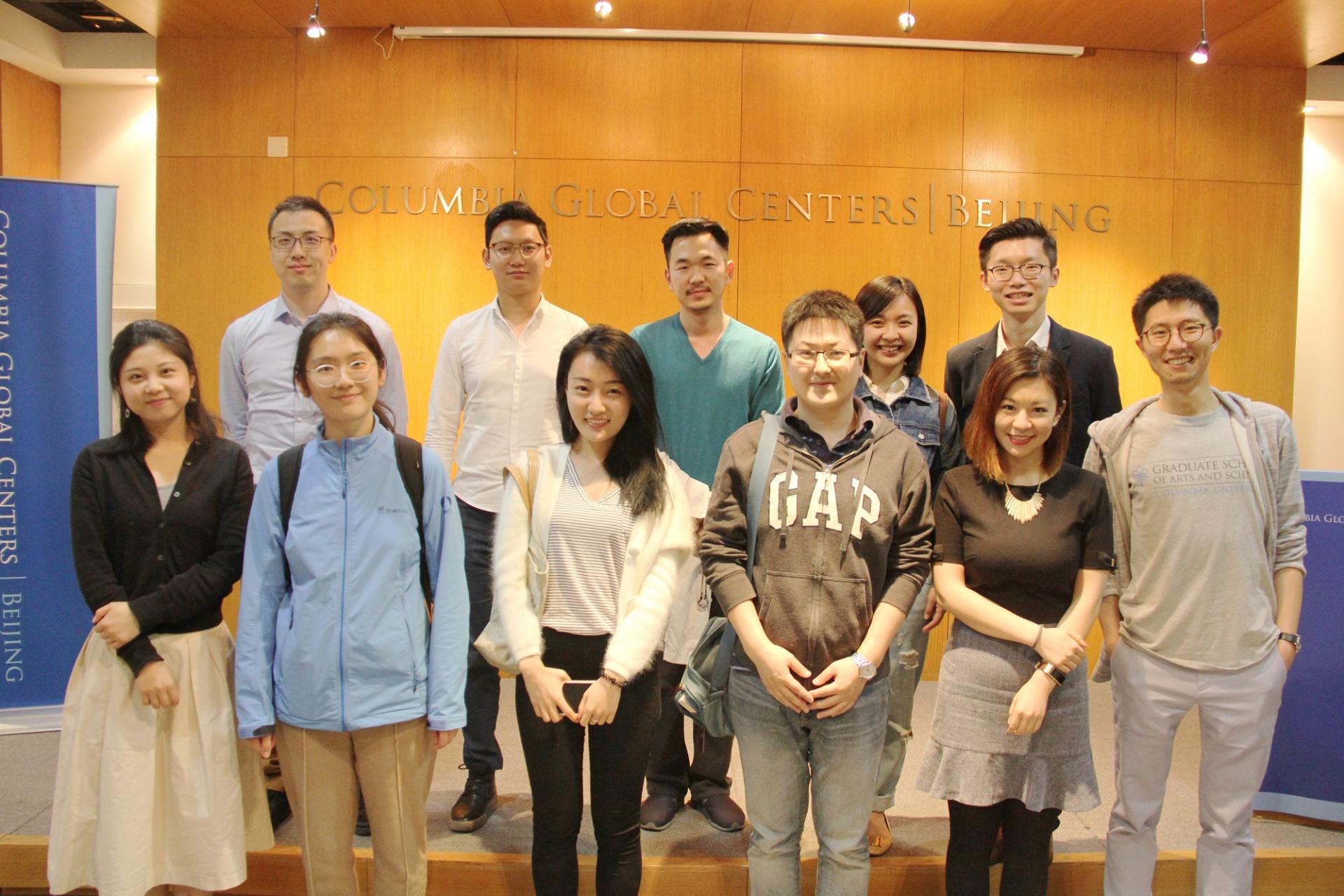On April 16, Columbia Global Centers | Beijing successfully held the second event of Columbia Global Centers | Beijing Salon Series, themed on “New York, Columbia, and I.” Four Columbia alumni, LIN Nan (SIPA ’16), WANG Xin (SIPA '16), Kailey Xi (SIPA ’15), and LIANG Mudi (TC ’15), together with nearly 30 alumni from Columbia initiated a discussion on the history, traffic systems, architectures, and arts in the New York City.
This is the second time for LIN Nan to speak at the Columbia Global Centers | Beijing Salon Series. He believes that the history of New York could be an epitome of American history, and that is highly related to the changes of world politics and economy since the Industrial Revolution. “New York has influenced the development of cities worldwide and has become an idea hard to explain,” said Lin. “It is already a part of our life that leaves us regrets, makes us complete, and always stays with us. Only if you experience, will you understand.”
WANG Xin’s speech, however, presented an alternative view on New York subways, which are commonly seen to be dirty, messy, and old with a lot of rats. “I studied traffic planning during my undergraduate years. Therefore from my perspective, New York subway is indeed very efficient and is able to transit you to your destination,” said Wang. “Most of the lines in New York have four rails, enabling both express and slow subways to run at the same time. As the express subways stop only at big stations in crowded areas, it promotes the efficiency of subway operation. In the meantime, while the branch lines are extended to suburban areas to increase coverage of railway transport, the main line runs mainly through the central city to maintain its departure frequency.”
Unlike Beijing, ground transportation in New York is quite pedestrian-friendly. It is safe and convenient for riding and walking. As Wang mentions, “New York, in general, has achieved a mode – that is while the public transportation allows high capacity on long distance, cycling and walking are relatively more convenient for short distance." Through this way, the New York City generates a more reasonable use of limited land resources and in the meantime, encourages public transit ridership.
As a fan of architectures, Kailey XI spoke about buildings in New York and their specialties. “Buildings in New York include styles of British, Greek Renaissant, Italianate, Gothic, Romantic, and Art Deco, from 18th century to modern and postmodern as well,” said Kailey, who has a special preference for the Art Deco.
The Art Deco appeared in 1920s and became popular in the1920s and 1930s. “One of the things that the Art Deco attracts me the most is its use of relief sculptures of the female figure. It shows that the female community has won freedom and rights in the society,” said Kailey.
Mudi LIANG at last unveiled the secrets of a Columbia underground tunnel and an arts storage inside.
“When you are in the Avery Library, follow the light through patios to the basement. Make a left or north and then go straight. Through the yellow light in the study area and through the white light in the exhibit area, you will see the yellow light again. And now, a studio by GSAPP is right in front of you. On your left-hand side showcasing a great amount of invaluable Chinese antiques. On your right there is a regular black door. This door, however, is the entry to the secret tunnel, which is said to be built for the Manhattan project. At the end of the tunnel, you will find the secret arts storage, which collects all kinds of precious antiques since the opening of Columbia University.”
